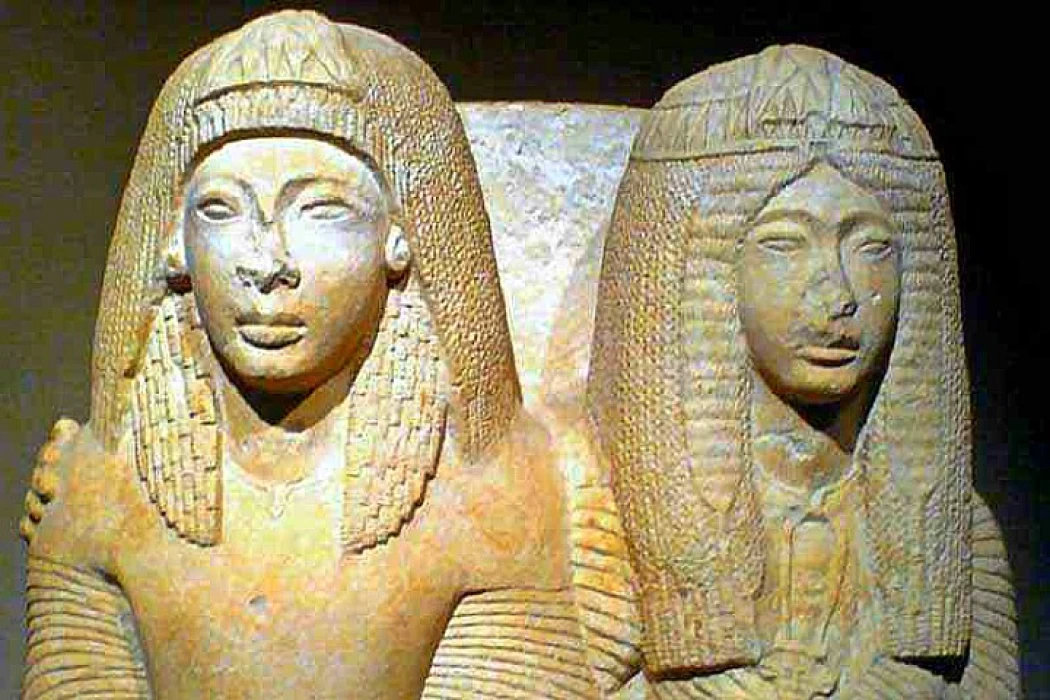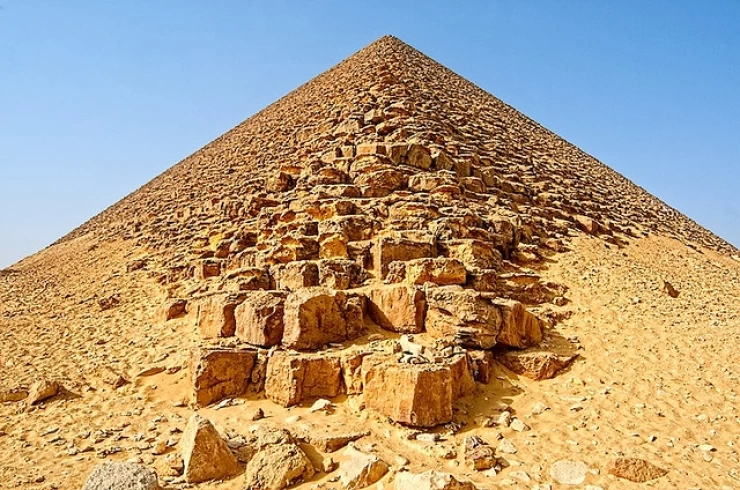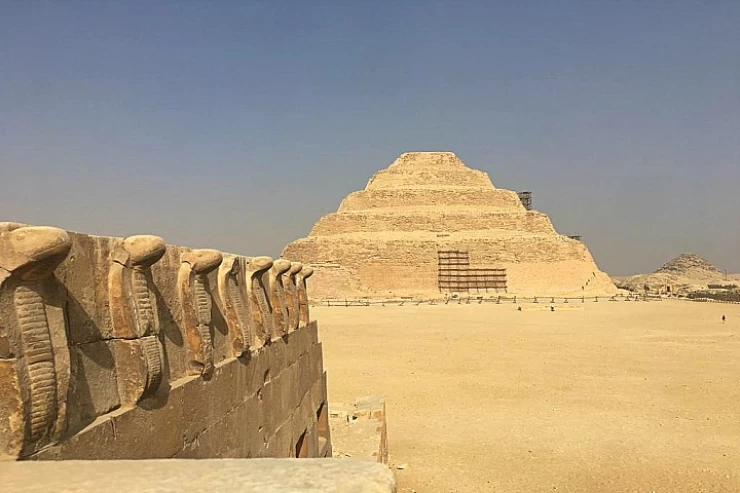
The Fourteenth Dynasty of Ancient Egypt
The Fourteenth Dynasty of Ancient Egypt
The Fourteenth Dynasty in Egypt was a series of rulers who ruled during the second intermediate period of the Nile Delta region in Egypt, and it was most likely the capital of rule Alvares.
The Fourteenth Dynasty was present simultaneously with the Thirteenth Dynasty in Memphis. Some Egyptologists believe the rulers of this family are of Canaanite origin, due to the distinct origins of the names of some of their kings and princes.
Within this family, there were at least two governing houses, and they were then relatively contemporary in ruling different regions of Lower Egypt, namely:
The Pharaohs of Sakha Xois dominated part of the western delta, and we do not know anything about them except that they assumed power often during the period of the pharaoh's rule "Sebekhotep IV (1730 - 1723 BC).
The second kingdom was established by "Nehesy" in the eastern delta around 1720 BC, with its capital "Avaris," which was considered a river port through which trade with Asia passed. Although it was an Egyptian kingdom, it was built on land where the majority of its population was through the Asians, so soon the wave of Hyksos, who spread their influence over Egypt, quickly started from that kingdom.
Some Key Characteristics of the Fourteenth Dynasty:
Territory:
Territory: The Fourteenth Dynasty ruled parts of Lower Egypt in the Nile Delta, and since the time of the Fourteenth Dynasty, the Nile Delta has been divided into several smaller, mostly self-governing regions.
Capital: The capital of the Fourteenth Dynasty must be Avaris in the eastern Delta, a great city and trading center. Avaris provided access along the river for trade with Asia and was hence a competitively important site for commercial interaction. It is interesting to note that this area became a center for the later Hyksos rulers.
Sakha and Xois: The Pharaohs of Sakha Xois ruled the western Delta, about whom little is known except for a probable link to the period of Sebekhotep IV (1730-1723 BC), ruler of the Thirteenth Dynasty.
Foreign Connection:
Canaanite or Asiatic Foundations: Many Egyptologists believe that the rulers of the Fourteenth Dynasty came from Canaanite or Asiatic stock. This belief derives from the Semitic character of some of the kings' and princes' names of this dynasty, suggesting strong foreign influence or even foreign origins. It is this fact that points to the wider picture of Asiatic migration to Egypt during the Second Intermediate Period.
Hyksos Influence: The eastern Delta, let's say under the Fourteenth Dynasty, was one of the largest pools of Asiatic people later known as Hyksos. The Fourteenth Dynasty rulers opened the way for these later Hyksos princes, dominating Egypt during the Fifteenth Dynasty. The Fourteenth Dynasty was thus a forebear of the Hyksos period from the standpoint of the increasing Asiatic influence in Egypt.
Fragmented National Unity:
Fragmented Rule: The Fourteenth Dynasty was but one of several contemporaneous dynasties ruling fragmented sectors of Egypt during the Second Intermediate Period, a period of extreme political instability where various rulers were holding sway in different regions, with little centralized rule. While the Thirteenth Dynasty held sway in the south, the Fourteenth held areas in the north, both being put on the back foot against the increasing power of the Hyksos.
Coexistence With the Thirteenth Dynasty: The rulers of the Fourteenth Dynasty coexisted with the Thirteenth Dynasty while controlling different regions. The Thirteenth Dynasty held Memphis and southern Egypt, while the Fourteenth Dynasty's power was more concentrated in the Delta region. The decline of both dynasties was due to foreign dangers such as the Hyksos.
Rise of the Hyksos:
The Hyksos Connection: The Fourteenth Dynasty's capital, Avaris, would later turn out to be very important for the Hyksos, who by then had taken over Egypt during the Fifteenth Dynasty. The Hyksos would be a people composed mostly of Semitic-speaking groups that entered Egypt in gradual stages. The very presence of the Fourteenth Dynasty in the eastern Delta, with the presence of a large population of Asiatic origin, probably gave more than a leg up to the Hyksos.
Latest Articles
Admin
Seabourn Sojourn Cruise Stops in Safaga Port
The Seabourn Sojourn, the flagship vessel of Seabourn Cruise Line's ultra-luxury fleet, was built in 2008 at the T. Mariotti shipyard in Genoa, Italy. Measuring 198 metres, it can accommodate up to 450 guests in its 225 spacious all-suite staterooms.
Admin
Norwegian Sky Cruise Stops in Safaga Port
Norwegian Cruise Line operates a cruise ship called the Norwegian Sky. It was constructed in 1999 and can accommodate 2,004 passengers in addition to 878 crew members. The ship has several dining establishments, lounges and bars, a spa and fitness center, swimming pools, and a number of entertainment areas.
Admin
Explora II Cruise Stops in Safaga Port
Explora II, the second vessel in the Explora Journeys fleet, sets sail in 2024 to redefine luxury cruising. With 461 ocean-front suites, 9 culinary experiences, and 4 pools, this haven of sophistication and sustainability promises an unforgettable "Ocean State of Mind" journey to inspiring destinations.
Admin
Mein Schiff 6 Cruise Stops in Safaga Port
The Mein Schiff 6 is the latest cruise ship in the renowned TUI Cruises fleet, offering passengers a luxurious and sophisticated cruise experience. At 315 metres long, this floating resort features a range of dining options, entertainment, and recreational facilities, including a spa, fitness centre, and sports amenities.
Admin
Mein Schiff 4 Cruise Stops in Safaga Port
When the Mein Schiff 4 cruise ship docks in Safaga, Egypt, passengers are granted access to a realm of ancient wonders. Aboard this state-of-the-art vessel, guests can embark on meticulously curated shore excursions that showcase the region's most iconic landmarks, including the Giza Pyramids, the enigmatic Sphinx, and the remarkable tombs and temples of the Valley of the Kings in Luxor.
Admin
MS Europa Cruise Stops in Safaga Port
The Silver Moon, Silversea's latest flagship, is a luxury cruise ship that offers an exceptional travel experience for Venezuelans exploring Egypt. With a capacity of 596 guests and an impressive 40,700 gross tonnes, the Silver Moon maintains the small-ship intimacy and spacious all-suite accommodations that are the hallmarks of the Silversea brand.















